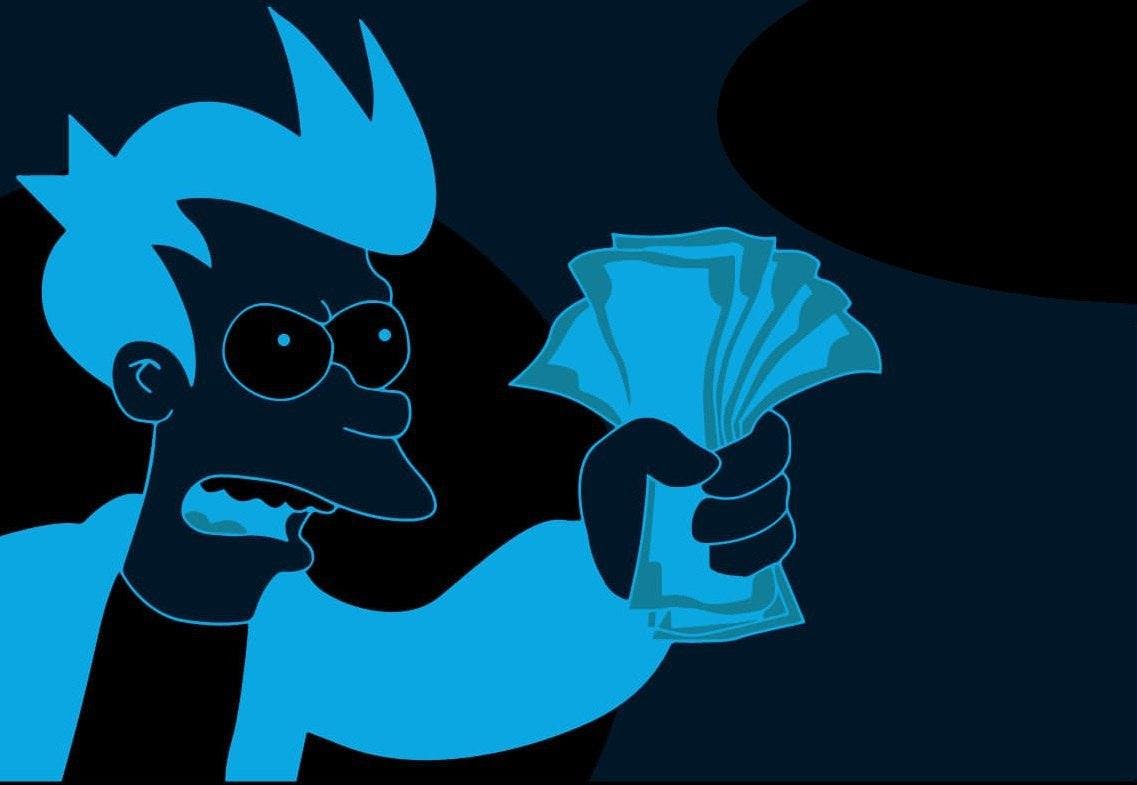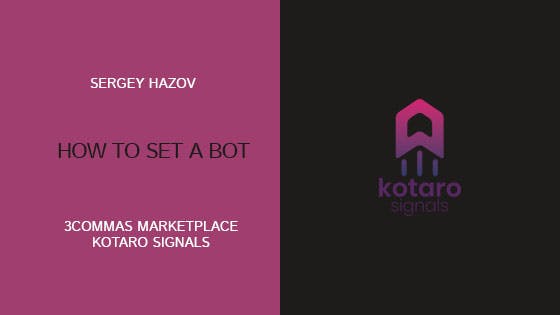
- All
- Tools
- Analytics
- Technical Analysis
- Trading
- Blockchain
- DeFi
- Guides
- Company News
- Educational
- Opinion
- Price Predictions
- Market News
- News
- Trading cases
- Practical guides
- Exchanges
- Trading signals
- Cryptocurrency
- Crypto bots
- Other
Become a crypto master
Learn everything about crypto,
trading and bots

How to Increase Success in Crypto Futures
Learn how AI and automation are transforming crypto futures trading in 2025. Discover how platforms like 3Commas offer advanced AI bots for precise, risk-contained strategies, enabling both retail and institutional traders to maximize success in volatile markets.
Start Trading on 3Commas Today
Get full access to all 3Commas trading tools with free trial period

How to Increase Success in Crypto. Futures
We open a series of articles on lesser known methods to increase success in crypto trading, including how to leverage 3commas functionality.
In this article, we will provide insights into the futures markets and how the 3Commas bots can be used, with step-by-step instructions.
What are futures
As we progress through 2023, the financial landscape continues to evolve, and one instrument that remains pivotal for traders and investors alike is "futures."
A future is essentially a binding agreement or contract stipulating the purchase or sale of a specific asset at a predetermined price, set at the contract's initiation. What distinguishes futures is the commitment: once the contract is inked, both parties are mandated to honor its terms, irrespective of the prevailing market price at the contract's maturity. In the dynamic world of 2023's markets, futures offer both opportunities and challenges, making it vital for participants to stay informed and exercise due diligence.
What is the interest in trading on futures exchanges
Futures exchanges primarily provide for:
- Leverage Trading – that is, trading with amounts significantly exceeding your own.
- Shorting – that is, speculating on the decline in the price of an asset
What is leverage. Example
Leveraged trading, also known as margin trading or trading on margin, is a system which allows the trader to open positions much larger than his own capital. The trader only needs to invest a certain percentage of the position.
“Leverage” usually refers to the ratio between the position value and the investment needed, and “Required Margin” is the percentage of the position required of the trader to open it.
While leverage trading requires less capital, which can be a major advantage for many traders, it also comes with a loss risk. As one can gain much more than his initial investment, losses can occur on the same scale. It is important to keep track of opened position and apply stop loss and other in order to prevent large scale losses.
Most cryptocurrency exchanges do not allow leverage or margin trading. However, specialized futures exchanges, trading contracts, are opened to leverage.
Let’s take a look at leverage trading using an example.
Your successful trade was closed and you received $ 100 result. Had you applied a leverage of 1:25, you would have earned $ 2,500 from the same transaction using exactly the same strategy. Thus, if you have a robust strategy, trading with leverage, can significantly increase your success without investing more than your own funds.
At the same time, you also increase the risk of losing your deposit if the price goes against your forecast. So if you use 0.1 BTC to buy 100,000 contracts (the leverage will be X100) and the price drops by 1%, you will lose everything in your account (0.1 BTC). With a leverage of 10, the negative deviation will be already 10%. In reality, liquidation will occur even earlier, since there are commissions, financing of a borrowed position, etc. This must be remembered.
Currently, leverage trading is available on a large number of exchanges, the largest in terms of volumes and liquidity being Binance Futures, Deribit and Bitfinex. Each platform has its own unique features, for example, Binance Features offers a maximum leverage of x125 for the BTC/USDT contracts, which complicates the manipulation of the exchange rate on this exchange.
What does it mean to short. Example
Short Selling, or Shorting is an investment or trading strategy that speculates on the decline in the price of an asset. The trading position in the terminal is called short.
Consider an example for the Bybit exchange, in which results are recorded only in BTC.
Let’s say you have 1 BTC. The spot price is now $ 10,000. You open a SHORT position using the entire BTC amount for 10,000 contracts (provided that 1 contract = $ 1). Thus, you sign an agreement that no matter what the price, at any time (prior to expiration, if the contract is not perpetual), the buyer must buy 1 BTC from you, at the price at the time of opening contracts (and we opened a position at $10,000 for 1 BTC).
At the same time, the 1 BTC in your exchange account is “locked” and remains pledged to the transaction, so that in case of a Margin Call you will be charged.
The price falls by 50% and now it is $ 5,000 for 1 BTC. You close a position of 10,000 SHORT contracts (sell 1 BTC, for $ 10,000). From your initially “locked” contract, 1 BTC is given to the buyer. In return, the buyer gives you 2 BTC ($ 5000 x2 = $ 10,000).
Your SHORT position is closed. What’s the result: the rate fell by 50%, BTC in your account increased by 100%. There was 1 BTC, it became 2 BTC. The dollar equivalent of your account grew by 0%. There was 1 BTC at a price of 10,000, it became 2 BTC at 5,000.
Thus, a successful short trade increases your BTC, and the dollar equivalent remains unchanged. If you trade on the Binance Futures exchange, you only take results in dollars. Then, in our example, the dollar equivalent of your account would grow by 50%.
And if in this example to use Leverage
The results will be as follows:
The spot price is $ 10,000, and we open a SHORT for 20,000 contracts having 1 BTC available (Leverage x2).
The Spot Price drops to $ 5,000 and we close the SHORT for 20,000 contracts.
Total:
It was 1 BTC ($ 10,000) + took 1 BTC ($ 10,000) and opened a SHORT position for 20,000 contracts.
The price fell by 50%. It was $ 10,000, it became $ 5,000.
The BTC in your account grew by 200% – having closed the SHORT position in 20,000 contracts, we bought 4 BTC for $ 5,000, we borrowed 1 BTC and paid = 3 BTC in the account. In dollars it was 1×10000, it became 3×5000 = + 50%.
The benefits of futures for miners
In addition to a speculative goal, futures can be used by miners to hedge risks, i.e. the miner plans to mine 10 bitcoins within a month and sell them for $ 7,000, but due to the high volatility of the market, the price of bitcoin may change downward. In order to protect himself from a strong change in the exchange rate, the miner opens a short position and finds himself in a win-win situation, since the value of the portfolio will not change:
– when the BTC rate falls, the miner loses due to the fact that he has bitcoins, but wins BTC on futures due to a short position.
– when the BTC rate grows, the miner loses BTC on futures due to a short position, but wins due to the fact that he has bitcoins.
Why 3Commas bots are useful when trading with leverage
If you have your own or a third-party successful strategy, you can not only automate it using 3Commas bots, but also earn a lot more on it using leverage.
Where to get these strategies?
1. Own strategy
You can create your own strategy using technical indicators or any other tools available in TradingView and automate the execution in 3Commas. How to do this is described in this article. To trade with leverage, you need to connect one of the available futures exchanges (Binance Futures, Bybit) to your 3Commas account, then in the bot settings you will have the leverage function:
2. Third-party ready-made strategy
You can also automate trading with third-party signals and connect your Leverage. The most popular ready-made signals according to our customers are the free Crypto Screener signals from TradingView. You can learn how to configure them by reading this article.
We also have a Market place with trading signals. You can select a successful signal and automate it, also with leverage.
What other types of signals are available – read here. You can connect any of them.
And now step-by-step instructions on how to automate strategies with bots and trade with leverage
We open an account on Binance Futures. This is done in three simple steps:
Log in to your Binance account;
Go to the Futures tab in the upper panel;
In the lower right corner, click on the Open now button. Done.
How to succeed with Futures Trading
In the lower right corner under the glass there is a Transfer button.
In the window that appears, enter the amount of USDT that we want to transfer from the exchange wallet to the Futures one. Collateral, insurance fund and transfer only in USDT. Therefore, in order to replenish your futures fund, you need USDT in your exchange account.
By the way, through the same window you can withdraw money from a futures wallet to an exchange wallet by clicking on the reverse button between wallets.
Now you have funds in your futures account, but to trade using 3Commas you need to provide access to your account via API. To do this, go to your Binance account> Settings> Manage API.
In the tab that appears, enter the name of our key and click “Create”, confirm by creating a code from 2FA by entering.
Then in the email, in which you need to confirm the creation of a new API key by clicking on the “Confirm new API key” button.
Next, we get to the API management page. Here we need restriction editing, an API key and a secret key.
Click “Edit restrictions” and put a tick in front of the “Enable trading” and “Enable Futures” items, the rest of the items, as well as the restriction of access by IP, enable as desired.
We copy the API key and secret key. Go to 3Commas in the “My Exchanges” section. In the “Exchange” field, select Binance Futures, come up with a name for your key (preferably such that you immediately understand that it is your key to Binance Features), insert the API key and secret key in the appropriate fields and click “Connect an exchange”.
Congratulations! You created the Binance Futures API key and are one step closer to a more advanced and secure futures trading. Next, create a bot for futures trading. To do this, go to the “Bots” tab on the side panel and select “Advanced” to create a bot with a more flexible trading strategy.
In the “Main settings” we come up with the name of our bot, in the “Exchange” field we select the name of the API key created in the previous paragraph. Type of bot leave “Simple”.
In the next step, select a trading pair. So far, two trading pairs are available on Binance Features: BTC / USDT and ETH / USDT.
The maximum leverage for BTC is x 125 and for ETH is x 50
Short or Long. There are two options: our bot will short (sell and buy cheaper) or spend (buy low and sell high).
“Profit currency” cannot be changed, since all calculations on Binance Features occur in USDT.
“Base order size” is the amount by which we will place our first order. The value can be set in BTC / ETH, USDT or in% of the deposit.
“Safety order size ” is the amount by which insurance orders will be placed after the opening of the transaction for averaging in the event of a price drop.
There are two types of start orders: execution by market (aka Market) or putting in Order book and waiting for the “needed” price (aka Limit).
“Leverage type” or leverage is the coefficient by which the exchange multiplies the client’s bid. It must be remembered that the greater the leverage, the greater the risk of losing your money, but also the greater the reward.
In the “Deal start condition” section, you select the strategy by which transactions will be opened (your own or third-party – we wrote about this above).
Take profit – what percentage of profit the bot will fix in the selected currency. Trailing allows you to get maximum results on unplanned price dynamics.
Use the Trailing tool and then if the price goes higher than you planned, your transaction will close at a price close to the maximum.
In the “Stop Loss” field, enter the amount of% of the deposit that we would like to keep.
In the “Stop Loss action” field, you can choose between closing a deal and closing a deal with a bot stop. “Stop Loss timeout” is needed to protect against squeezes, because it often happens that you decide to short up, find a great entry point, set a stop and everything seems to be fine, but one random squeeze knocks your stop in the wrong direction, closing the deal, and the price is BTC begins to decline. Whatever this is, you can set a timeout that checks after a specified time whether it is worth closing your order in the stop or not.
Block “Safety orders” are needed to average the position.
You can read more about safety orders here, but we add that you shouldn’t average too much, in some situations it is better to reconsider your vision of the market.
The “Advanced Settings” block is needed to introduce a number of small corrections.
The “Do not start a deal if the daily volume is less than” field is needed for trading low-liquid altcoins, and on Binance Features the trading volume in one pair may be larger than on some exchanges per week.
The minimum and maximum opening prices are needed in order for the bot to trade in a given range and not to shorten the bottom.
The “Deal start delay” can be used to distinguish a squeeze from a strong rise / fall without a pullback.
In the “Cooldown between deals” sets the time that must elapse between the opening of a new transaction.
“Open deals and stop” allows you to better control the bot after opening a given number of transactions. It is important to remember that open, but not yet completed transactions, are also recorded.
After we configured our bot, we need to double-check the stops and whether all the parameters are specified correctly. After that, click on the “Create Bot” button in the right bloc
If everything is done correctly, then you will see a window offering to launch your bot.
Start!
All information about the bot can be viewed in the section Bots> My Bots. There you can disable the bot, view detailed information, statistics, etc.
Remember, trading with leverage has more risks than spot trading, but there may be more rewards.
AI and Automation in Futures Trading: The 2025 Playbook
Futures trading in 2025 is increasingly dominated by algorithmic strategies powered by ai trading bots and automated bot trading crypto systems. These tools are no longer the exclusive domain of institutions—retail traders now routinely deploy crypto AI trading bots to manage leveraged positions, dynamically adjust stop-loss and take-profit zones, and minimize human error during periods of extreme volatility.
A notable trend is the rise of bot signal trading, where trades are initiated based on aggregated signals processed by machine learning models. These signals now factor in real-time liquidity data, historical volatility patterns, and market microstructure indicators, allowing for highly adaptive entries and exits on perpetual swaps or quarterly futures.
Platforms like 3Commas have evolved to accommodate this shift by offering futures-ready ai crypto trading bots that incorporate trailing features, margin management automation, and multi-timeframe signal integration. These bots can now respond to sudden liquidation cascades or price manipulation events with millisecond precision, outperforming even seasoned manual traders.
Furthermore, auto trading bots designed specifically for futures markets include backtesting modules that simulate leverage-specific PnL behavior over historical periods. This allows traders to develop robust strategies for BTC, ETH, and increasingly, altcoin contracts like SOL, AVAX, and LINK. As a result, the ecosystem is witnessing a professionalization of futures trading at every level, powered by a new generation of crypto trading bot software designed for predictive precision and risk containment.

A proven leader, successful at establishing operational excellence and building high-performance teams with a sharp focus on value creation and customer success.





